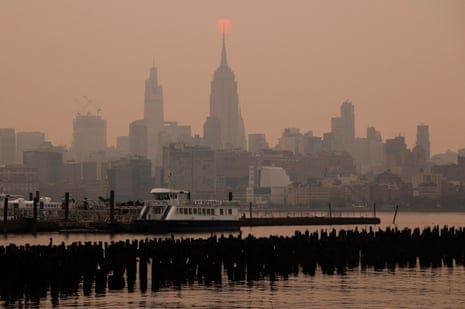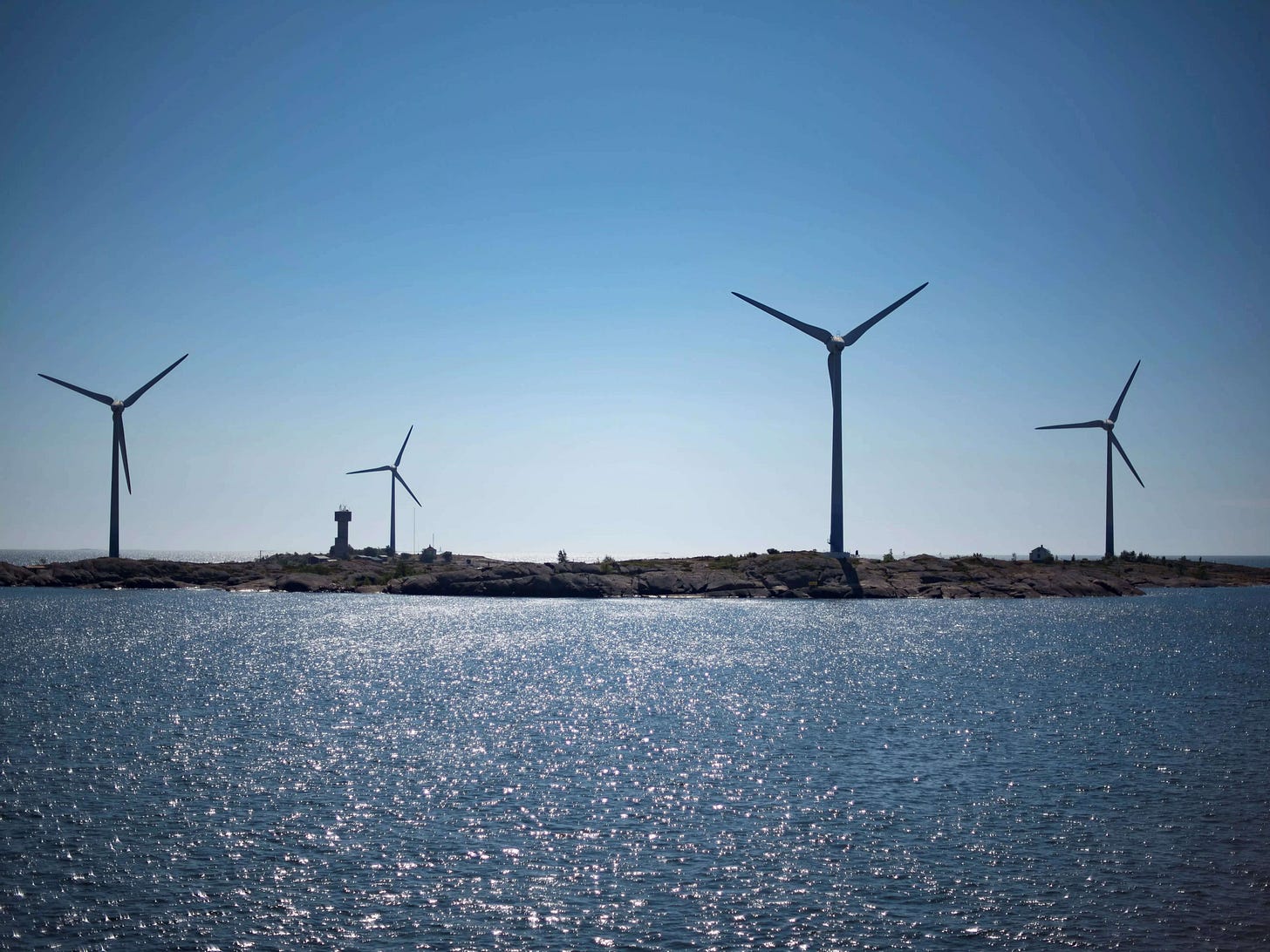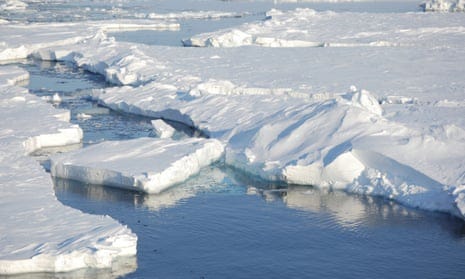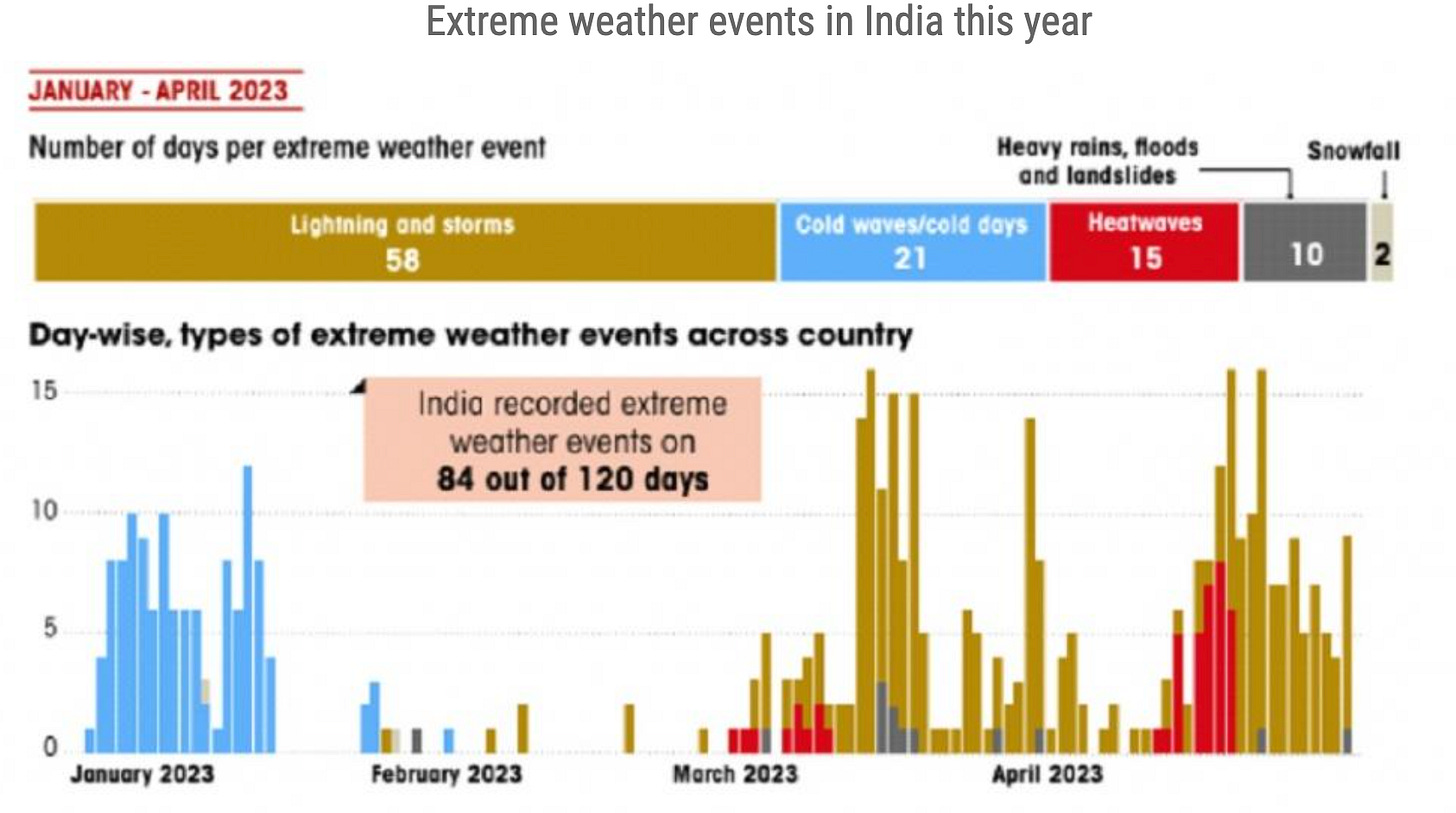Sunny climate, stormy climate | Weekly digest #7
Welcome to your weekly digest of Sunny climate, Stormy climate - your weekly dose of climate news
Hello and welcome to the seventh edition of Sunny climate, Stormy climate! Here, every week I bring to you 5 stories about the climate
3 stormy ones - concerning stories that are a source of alarm
2 sunny ones - green shoots that tell you that all is not yet lost
So let’s look at what we have this week!
Stormy news
New York covered in a blanket of smoke as Canada wildfires continue to rage

The Empire State Building in New York City shrouded in smoke on 6 June; Source: Guardian; Photographer: Gary Hershorn/Getty Images What is happening?
Canada has been witnessing intense wildfires for more than a month now. (read more in an earlier edition)
The wildfires which started in the Western province of Alberta have now spread to the Eastern province of Quebec. The fires are extremely intense with more than 400 active fires at the moment.
The smoke from these fires is being carried by wind southwards all the way into the United states and has resulted in major US cities being covered in a blanket of smoke. These include New York which saw its worst air quality in recorded history and Washington.
What is the biggest concern?
The biggest health concern is the high concentration of fine-particle pollution – known as “PM 2.5” – which can irritate the lungs and cause long term damage. People have been advised to not step out at all or wear masks while stepping out, resulting in a lot of parallels being drawn to Covid times.
But is this linked to climate change?
Well… you know the answer by now!
There has been a very clear increase in the frequency and intensity of wildfires in Canada and the United states. This one has by far been the worst wild fire in recent history by a mile.
Scientists have linked this to the steady drying out of forests, grasslands and peatland. This is due to a steady rise in temperatures. Our forests and grasslands are now drier than ever and warmer than ever. This is leading to more frequent and intense fires.
There’s no avoiding a sea-ice free Arctic summer any more. And it could happen as soon as 2030!
What are we talking about?
It may be too late to save the Arctic summer sea ice. “Unfortunately it has become too late to save Arctic summer sea ice,” said Prof Dirk Notz, of the University of Hamburg, Germany, who was part of the study team
Analysis shows that even if greenhouse gas emissions are sharply reduced, the Arctic will be ice-free in September in coming decades. All scenarios including low emission scenarios now project a complete loss of sea ice in September.
The study also shows that if emissions decline slowly or continue to rise, the first ice-free summer could be in the 2030s, a decade earlier than previous projections.
Why is this happening?
Since satellite records began in 1979, summer Arctic ice has shrunk by 13% every decade
Arctic sea ice reaches its annual minimum at the end of summer, in September, and in 2021 it was at its second lowest extent on record.
Research shows that 90% of the melting is the result of human-caused global heating.
Why is this bad?
Faster melting of Arctic sea ice leads to a vicious circle of more heating, because the dark ocean exposed as ice melts absorbs more heat from the sun. The result is faster warming in the Arctic.
Scientists have increasing evidence that this is weakening the jet stream and leading to more extreme weather events in North America, Europe and Asia.
This loss of ice will likely result in increase in weather extremes that we are experiencing now, such as heatwaves, wildfires and floods.
It will also result in melting of permafrost region resulting in release of the trapped methane that will further increase temperatures due to the greenhouse gas effect.
It will also adversely affect polar bears and other Arctic wildlife that depend on the sea ice.
India has seen an extreme weather event on 2 out of 3 days Jan - April 2023!
What is an extreme weather event?
Extreme weather includes unexpected, unusual, severe, or unseasonal weather; weather at the extremes of the historical distribution. Example: receiving amount of rainfall that is unusual for a particular place for that time of the year, experiencing temperatures that are unusual for that place for that time of the year
What is happening in 2023?
India experienced extreme weather events on 84 of the 120 days in the first four months of 2023.
These include lightening and hailstorms, heat waves, cold waves and heavy rains.
While the number of extreme weather is similar to 2022 the difference is we have seen a lot more of hailstorms this year (v/s heat wave days last year)
What is the impact?
Between January and April 2023, extreme weather events claimed 233 human lives, in comparison to 86 human lives during the same period in 2022.
At least 0.95 million hectares (mha) of cropland was damaged between January and April, 2023, due to extreme weather events. This is at least 31 times the 0.03 mha of cropland affected in 2022.
Sunny news
TATA setting up a Lithium ion battery giga factory in Gujrat
What is happening?
The TATA group announced last week that they are investing INR 13000 cr in setting up a massive Lithium ion battery gigafactory in Gujarat
This will be India’s first giga factory - for building lithium ion cell batteries in India and be a crucial step in building out India’s self sustainability in the EV value chain
How does this help?
Lithium ion batteries are a crucial part of manufacturing electric vehicles
So far the Lithium ion battery manufacturing capacity in India has been limited and creating indigenous capacity for the same will be crucial if India has to meet its EV goals.
An earlier report by the CEEW had said that India needs to invest 33000 cr in building at least 50 GWh of Li batteries. Factories like the one TATA is setting up will go a long way in meeting that goal
Finland had a new problem: Energy prices turned negative as it produced TOO MUCH clean energy!

An offshore windfarm on near the Aland Islands, an autonomous archipelago that is a region of Finland in the Baltic sea; Source: OLIVIER MORIN/AFP via Getty Images What are we talking about?
Finland had an unusual problem towards the end of May. It produced so much clean energy that its energy prices turned negative (i.e. it had more supply than demand for electricity)
Finland has gone from being energy poor (in the winter of 2022) to having an energy glut in a matter of a few months.
How did this happen?
A new nuclear reactor was brought online in April this year and provided a significant new stream of power
Finland has a lot of hydro electric plants and excessive meltwater — which has caused flood warnings in several northern European countries — is pushing Finland's hydroelectric plants into overdrive and giving plentiful electricity.
Finland has also built offshore wind farms that are contributing to clean energy
Why is this a good thing?
While some of it (hydro - electric led) may not be sustainable, this is a good sign of countries achieving higher share of clean energy and reducing dependence on fossil fuels.
If you liked this, don’t forget to hit subscribe and please feel free to leave a comment on the post.





